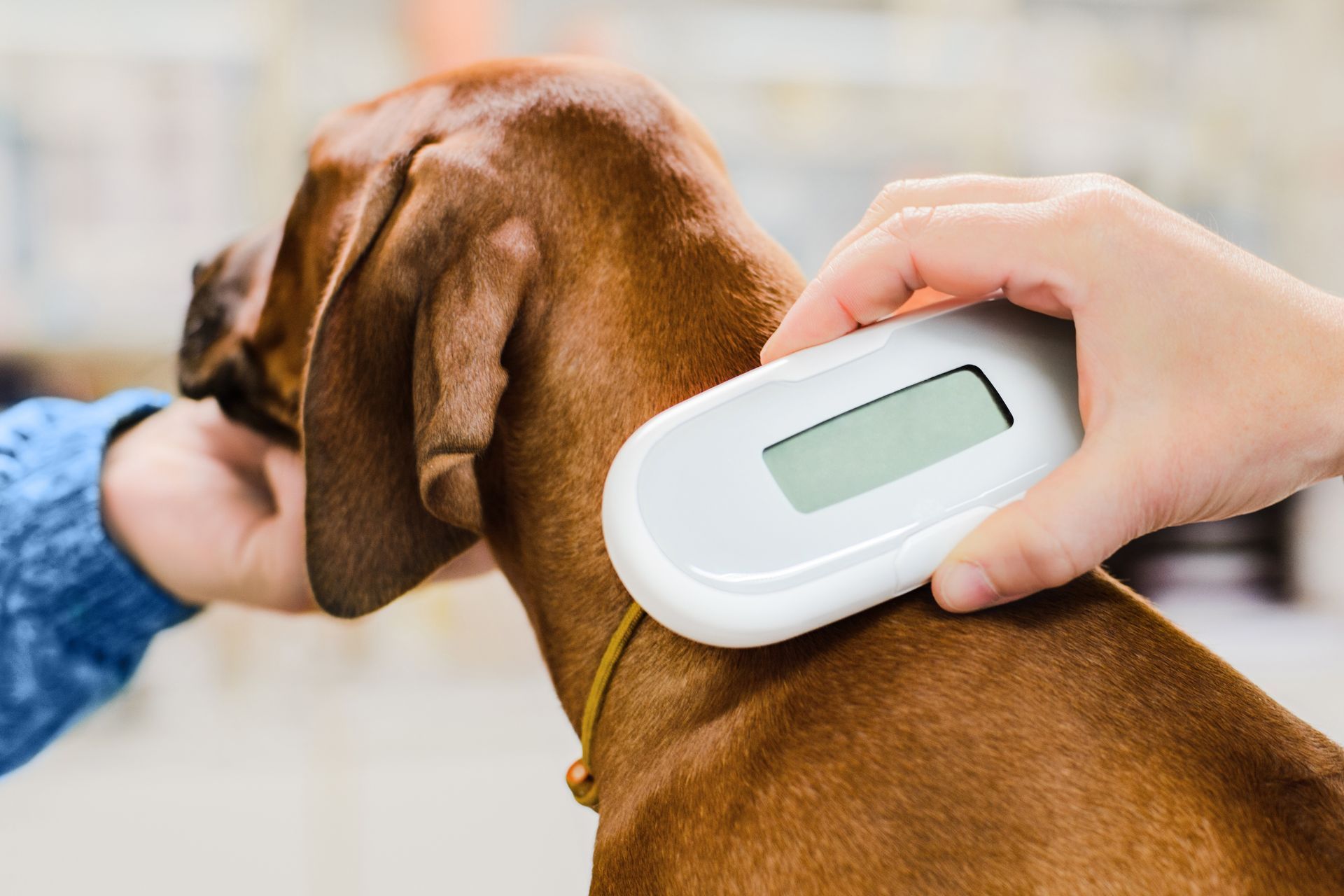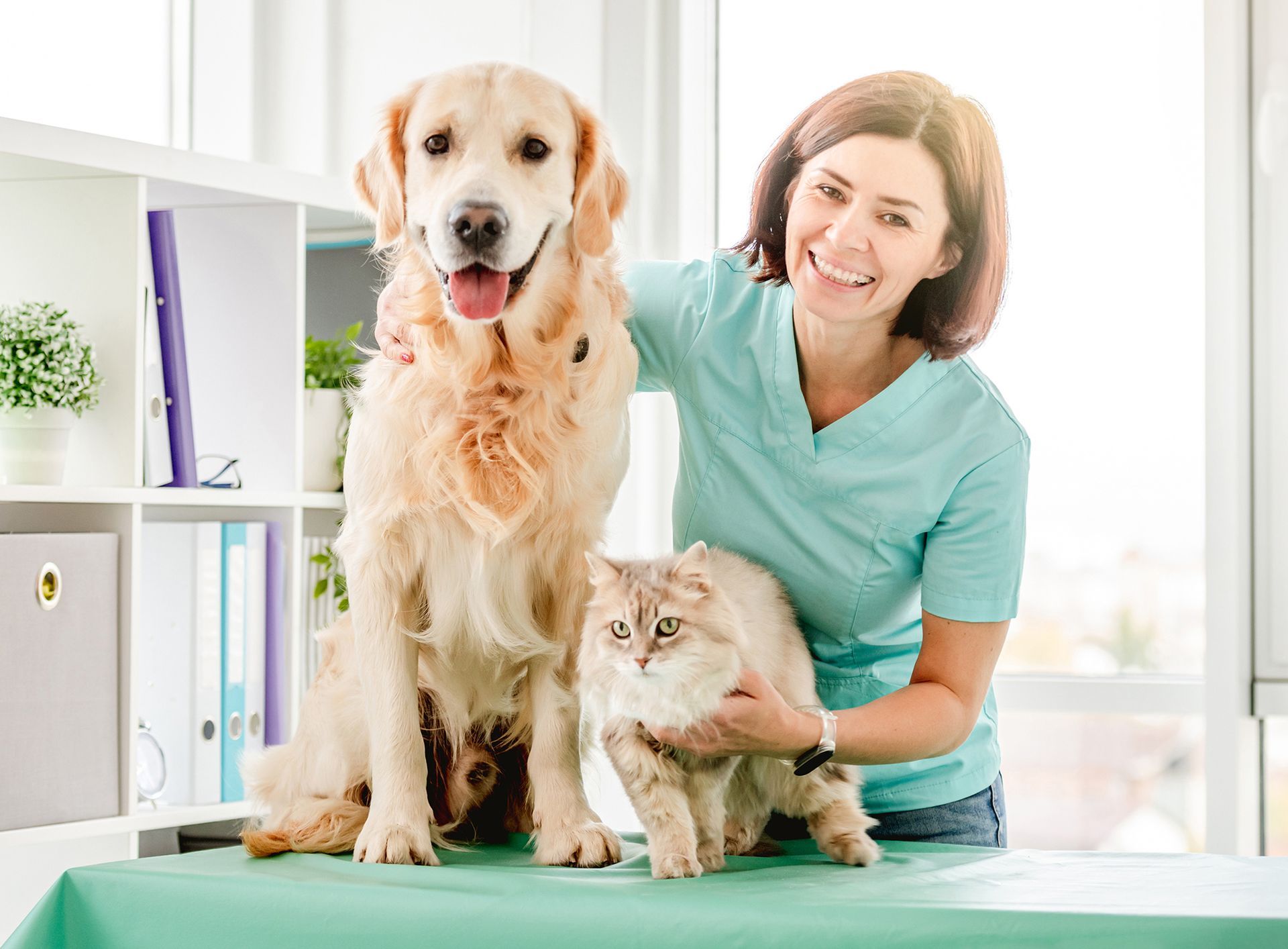Detecting & Managing Arthritis Flare-Ups in Pets as the Weather Cools
Key Points
- Cold, damp weather can significantly worsen arthritis symptoms in pets
- Early signs include reluctance to move, stiffness after rest, and behavior changes
- Home management includes joint supplements, gentle exercise, and environmental modifications
- Weight management is crucial for reducing joint stress during flare-ups
- Professional treatment options provide significant relief for arthritic pets
- Regular veterinary monitoring helps prevent severe pain episodes
Every October, I start getting the same phone calls at Castle Hill Animal Hospital. "Doc, Buddy was fine all summer, but now he can barely get up in the morning." Sound familiar?
You're not imagining things. That cool, damp Texas weather we get in fall really does make your pet's joints ache more. After fifteen years of practice here in Lewisville, I've learned that the weather change hits arthritic pets harder than most people realize.
But here's what I tell every worried pet parent who calls: there's so much we can do to help your furry friend feel better, even when Mother Nature isn't cooperating.
Why Your Pet Hurts More When It's Cold
Think about how your own knees feel before a storm hits. Your dog or cat experiences something similar, just without the ability to tell you about it.
When that barometric pressure drops, the tissues around your pet's joints swell up. Imagine trying to fit into jeans that are suddenly a size too small – that's what's happening inside those already-sore joints.
Cold weather also slows down blood flow, which means less oxygen and nutrients getting to where they're needed most. Plus, muscles naturally tighten up when it's chilly, putting extra stress on joints that are already working overtime.
I see this pattern every single year. Dogs who were hiking trails in August are suddenly struggling with the front steps in November. Cats who used to leap onto kitchen counters are now looking for alternative routes to their favorite spots.
Spotting the Signs Your Pet Is Hurting
Pets hide pain incredibly well – it's survival instinct. But once you know what to look for, the signs become pretty obvious.
Watch your dog's morning routine. Does he stretch longer than usual before getting up? Take a few extra seconds to stand after lying down? Maybe he's not bounding to the door when you grab the leash anymore.
For cats, pay attention to their jumping habits. If Fluffy used to sail onto the kitchen counter but now climbs up via the chair, that's telling you something. Same goes for litter box issues – sometimes accidents happen because it simply hurts too much to make the trip downstairs.
Changes in personality matter too. Sweet dogs might get snappy when you touch certain spots. Social cats might start hiding more. Your normally food-motivated pet might lose interest in meals because everything just feels uncomfortable.
Here's something most pet parents miss: watch how your pet walks after they've been lying down for a while. Arthritic pets often look stiff for the first few steps, then loosen up as they get moving. We call this the "warm-up period," and it's a dead giveaway.
What You Can Do at Home Right Now
The good news? You don't need a veterinary degree to start helping your pet feel better today.
Let's talk supplements first. Glucosamine and chondroitin aren't just marketing buzzwords – they actually work. Think of them as food for your pet's cartilage. The catch is they take time, usually about six weeks to see the full benefit. So don't give up after a week if you're not seeing dramatic changes.
Fish oil is another game-changer. The omega-3s reduce inflammation throughout your pet's body, not just in the joints. Plus, you'll probably notice their coat looking shinier too – bonus!
Now, about exercise. This trips up a lot of pet parents. Your first instinct when your dog is limping might be to limit activity completely, but that actually makes things worse. Joints need movement to stay healthy.
The trick is finding that sweet spot. Instead of one long walk, try three shorter ones. Swimming is fantastic if you have access to it – all the benefits of exercise with none of the joint stress. For cats, those fishing pole toys work great because you can keep the action at ground level.
Making Your House More Comfortable
Small changes around your house can make a huge difference in how your pet feels.
Warmth is key. I can't tell you how many times I've seen pets improve just from getting them off cold tile floors. Heated beds designed for pets are worth every penny. Even a thick blanket in their favorite spot helps.
Think about accessibility too. Baby gates with walk-through doors, ramps to the couch, raised food bowls – these aren't just conveniences, they're pain management tools.
For cats, consider adding more litter boxes around the house, especially on different floors. Make sure at least one has lower sides for easier entry. Trust me, your cat will appreciate not having to navigate stairs when nature calls.
The Weight Factor (It's More Important Than You Think)
I have to be honest with you about something that's uncomfortable but crucial: weight matters enormously when it comes to arthritis.
Every extra pound your pet carries adds about four pounds of pressure to their joints. I know it's hard to hear, especially when you're already worried about their comfort. But losing even a pound or two can dramatically improve how your pet feels.
If your pet needs to lose weight, please don't just cut their food in half. Work with us to create a plan that keeps them getting proper nutrition while safely shedding pounds. Crash diets don't work for pets any better than they do for people.
When to Call Us
Some situations can't wait for your next routine appointment. If your pet suddenly can't bear weight on a leg, cries when moving, or stops eating, call us right away.
But don't wait for a crisis either. If you're noticing gradual changes – slower on walks, hesitant about stairs, less playful than usual – it's time for a conversation. Arthritis is progressive, meaning it gets worse over time without treatment.
I'd rather see your pet when they're mildly uncomfortable and have lots of treatment options than wait until they're in serious pain.
Treatment Options That Actually Work
Modern veterinary medicine has come so far in pain management. We're not just talking about "grin and bear it" anymore.
NSAIDs designed specifically for pets can provide significant relief. Unlike human pain meds (which can be dangerous for pets), these are formulated for their bodies and metabolism.
Gabapentin helps with nerve-related pain. Some pets respond beautifully to it, especially for those shooting pains that come with severe arthritis.
We also offer laser therapy, which sounds fancy but is really just using specific light wavelengths to reduce inflammation and promote healing. Most pets find it relaxing – some even fall asleep during treatment.
For severe cases, joint injections can provide months of relief. It's not a cure, but it can give your pet their life back.
Getting Ready for Winter
Don't wait until your pet is miserable to start planning for the cold months ahead.
If you suspect arthritis, schedule an exam now while symptoms are mild. It's much easier to prevent flare-ups than to treat them after they happen.
Stock up on any supplements or medications before you need them. Nothing's worse than running out of joint supplements on a weekend when your pet is having a rough day.
Consider investing in some comfort items now – heated beds, ramps, orthopedic bedding. Think of it as an investment in your pet's quality of life.
FAQs About Pet Arthritis and Weather Changes
Q: Can young pets get arthritis?
A: Unfortunately, yes. While it's more common in older pets, young animals can develop arthritis from injuries, genetic conditions like hip dysplasia, or joint infections. The earlier we catch it, the better we can manage it.
Q: My pet seems fine in the morning but worse by evening. Is this normal?
A: Actually, it's usually the opposite with arthritis – worse in the morning after being still all night, then improving with gentle movement. If your pet is worse by evening, they might be overdoing it during the day.
Q: Can I give my dog aspirin for joint pain?
A: Please don't. Human pain medications can be toxic to pets, and aspirin can cause serious stomach problems in dogs. We have much safer and more effective options designed specifically for pets.
Q: How do I know if the supplements are working?
A: Give them at least 6-8 weeks. Look for subtle improvements – maybe your dog doesn't hesitate as long before jumping in the car, or your cat starts using the stairs again. The changes are often gradual.
Q: Is arthritis painful for pets?
A: Yes, but the good news is we can manage that pain very effectively. Pets are stoic, so by the time you notice symptoms, they've probably been uncomfortable for a while.
FAQs About Castle Hill Animal Hospital
Q: How do you diagnose arthritis in pets?
A: We start with a thorough physical exam, watching how your pet moves and checking for joint swelling or pain. X-rays help us see what's happening inside the joints and plan the best treatment approach.
Q: What's your approach to pain management?
A: We believe in multimodal therapy – using several different approaches together for the best results. This might include medication, supplements, weight management, physical therapy, and environmental modifications.
Q: Do you offer payment plans for ongoing arthritis treatment?
A: We understand that managing a chronic condition can be expensive. We're happy to work with families to create treatment plans that fit their budget while still providing effective care.
Q: How often will my arthritic pet need to come in?
A: It depends on their condition and how they respond to treatment. Initially, we might see them every few weeks to adjust medications. Once we find what works, many pets only need check-ups every 3-6 months.
Q: Can you help me make my home more comfortable for my arthritic pet?
A: Absolutely! I love giving specific recommendations for ramps, bedding, and other modifications. Sometimes simple changes make the biggest difference in a pet's comfort level.
Your Pet Doesn't Have to Suffer
Arthritis is manageable. I've seen countless pets go from barely moving to playing fetch again with the right treatment plan.
The key is not waiting until your pet is in obvious pain. Those subtle changes you're noticing? They matter. Your pet is counting on you to speak up for them when they can't tell you they're hurting.
Weather changes are going to happen – we can't control that. But we can absolutely control how prepared your pet is to handle them.
If you're noticing any changes in how your pet moves, especially with this cooler weather, give us a call at (469) 962-2060. Castle Hill Animal Hospital is located at 3964 TX-121, Suite #100, Lewisville, TX 75056.
Let's work together to keep your furry family member comfortable and happy, no matter what the weather brings. Visit www.castlehillsvet.com to learn more about our arthritis management services.
Your pet's comfort is worth the phone call.











